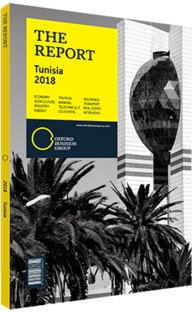Strong responses to public offerings demonstrating growth potential in Tunisia's local market
The Tunis Stock Exchange (Bourse des Valeurs Mobilières de Tunis, BVMT) is the local stock market, and although it was originally established in 1969 as a public entity, it has been a private entity since 1994, jointly and equally owned by 23 brokerage firms.
The BVMT’s primary tracking tool is the Tunindex. Launched at the end of 1997, it is a capitalisation-weighted index with the weight of any company capped at 15%. The main index is open for all listed stocks and currently tracks 80 companies. The BVMT’s secondary index is the Tunindex 20, which began in 2006 to track the performance of the 20 most-active stocks in terms of capitalisation and liquidity.
Performance
Despite sluggish economic growth, the equity market has witnessed strong initial public offering (IPO) activity, with the number of listed companies rising from 59 to 81 between the end of 2010 and early 2018. One of the most notable features of the Tunisian equity market is the omnipresence of the banking sector. Banks have a large share of both market cap (43%) and the Tunindex (49%), while the agriculture sector is second in the market thanks to Société de Fabrication des Boissons de Tunisie, a beverage producer with a market cap of TD2.6bn (€998.3m), and Délice Holding, a milk and dairy producer with a market cap hovering around TD1bn (€384m). In 2014 Délice Holding was the first IPO to be carried out in the market using the book-building technique. Another major feature of the equity market is the lack of permanent institutional demand. Although local institutional investors have traditionally been an important source of liquidity for the fixed-income market, they maintain limited investment exposure to the equity market: only 11% of total assets were under management in collective investment schemes at the end of October 2017. The weakness of institutional demand is an issue that is being addressed by the public authorities, and the set-up of the Caisse des Dépôts et Consignations to sponsor equity funds in 2016 with an injection of TD120m (€46.1m) in the market was viewed favourably by investors.
In 2017 the market bucked the predictions of observers, gaining 12% on the year. The main index’s performance was lifted by the banking sector, whose stocks rose by an average of 20% from the beginning of the year. Each of the six main banks reported 2016 earnings at TD100m (€38.4m) or over. As a result, three of the banks have a market cap of TD1.5bn (€576m) or more. The picture is less optimistic liquidity-wise. The year saw a 26% slowdown in traded volume, notwithstanding a block trade market for which 55 transactions generated a traded volume of TD300m (€115.2m).
Reform Needed
Within the primary market, two IPOs were reported in 2017: the maker of sanitary products, Sanimed, with a market cap of TD57m (€21.9m), and the furniture manufacturer Atelier du Meuble Intérieurs, with a market cap of TD22m (€8.4m), successfully listed their shares. Unlike previous years, their oversubscription rates were low, with Sanimed at 1.4 times and Meuble Intérieurs 1.6 times. The foreign ownership rate of the market dropped from 24.5% in 2016 to 24% in late 2017. Foreign institutional investors were net sellers with a negative flow of TD68m (€26.1m). The reasons behind the sell pressure are clear: first, the state of the Tunisian economy and subsequent fall of the local currency; and second, the profit-taking movement by investors looking to raise cash to meet redemptions on Africa and frontier funds. It would be misleading to interpret the recent rebound as entirely good news, unless Tunisian policymakers tackle reform issues. However, there are reasons for optimism. The market is expected to continue its positive movement due to the banking sector, fuelling earnings growth with expectations of the benefits of rising interest rates on margins. Overall, market recovery will be unsustainable unless the government addresses the macroeconomic imbalances and restore the country’s capacity to invest.
You have reached the limit of premium articles you can view for free.
Choose from the options below to purchase print or digital editions of our Reports. You can also purchase a website subscription giving you unlimited access to all of our Reports online for 12 months.
If you have already purchased this Report or have a website subscription, please login to continue.

